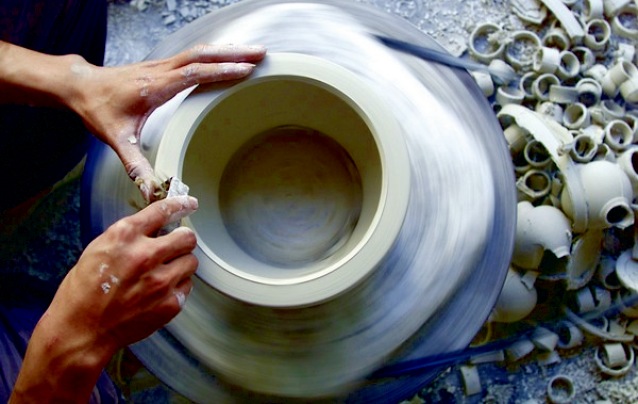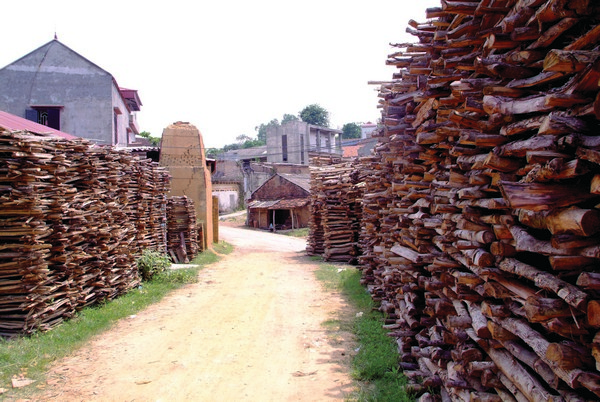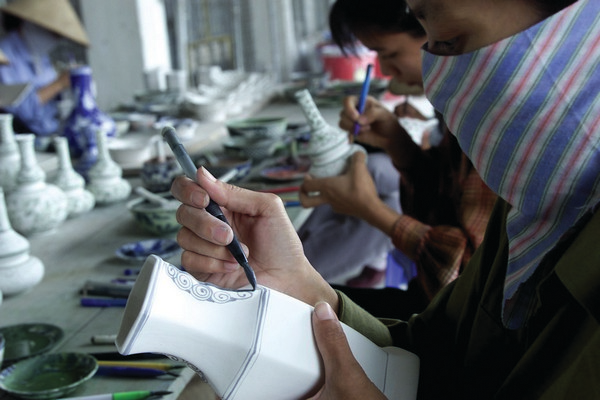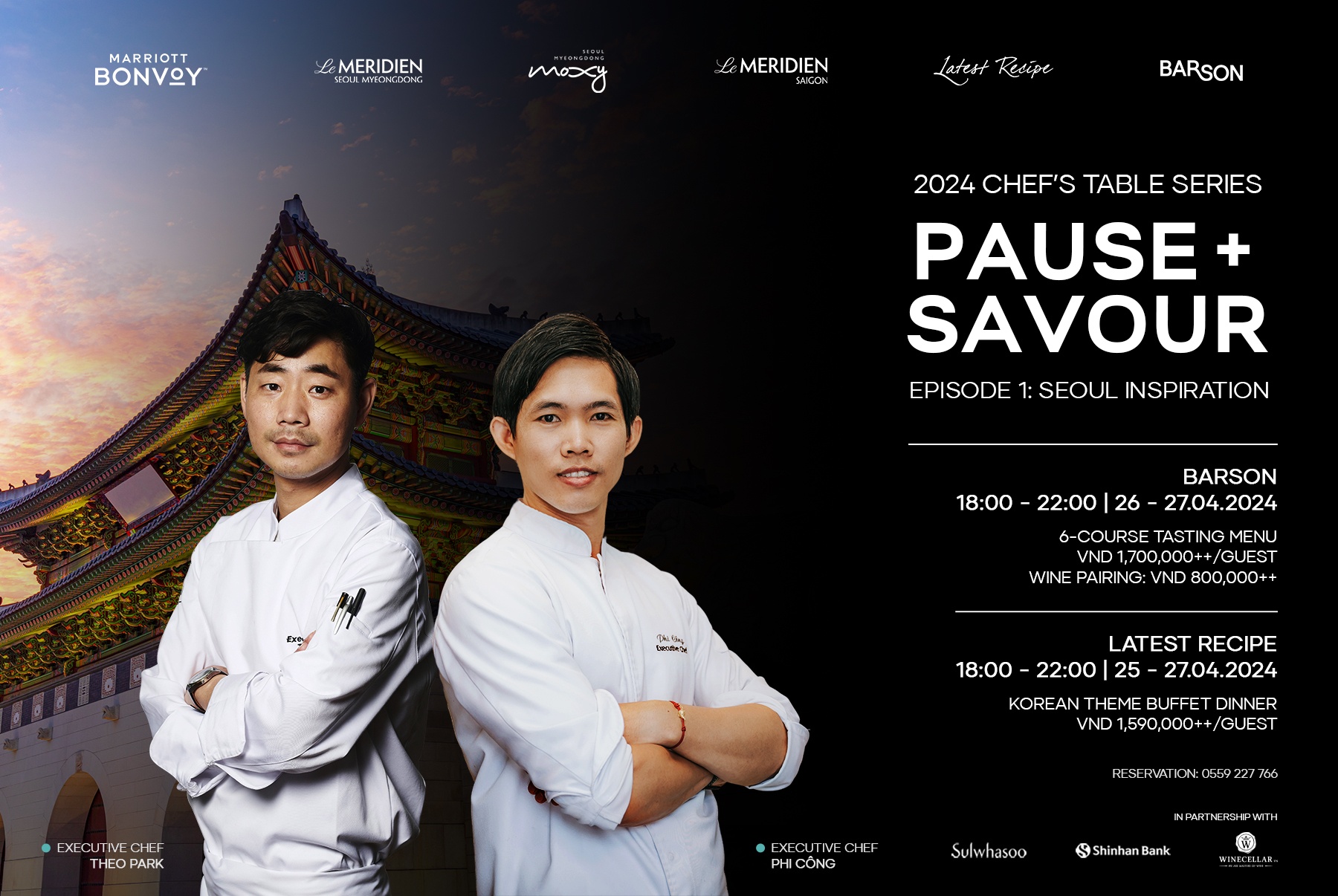Stoking the kilns
‘Van Van has Tho Ha wharf,
Van Van makes wine, while Tho Ha makes pottery…’

So goes the old rhyme about Tho Ha, whose name was once well and truly on the map of pottery villages in Vietnam. Fifty kilometres northwest of Hanoi, in Bac Giang province, Tho Ha village sits by the Cau River and boasts the peaceful beauty of the Vietnamese countryside, with images of a leisurely flowing river, rustic boats, and an intricately-carved communal house by the quayside.
Navigating along Tho Ha’s narrow zigzag alleys awakens memories of the golden days of the country’s pottery industry. The broken terracotta used to build remarkable houses and walls provides a glimpse into the village’s glorious past. Along with Phu Lang and Bat Trang villages, this was one of three ancient centres producing fine pottery in northern Vietnam.
According to legend, during the Ly Dynasty the emperor sent three of his envoys - Hua Vinh Kieu from Bo Bat village, Thanh Hoa province, Dao Tri Tien from Tho Ha, and Luu Phong Tu from Ke Sat village, Hung Yen province - on a mission to China. On the way home a severe storm struck and they had to take shelter in China’s Guangdong province. It was there that they first acquired knowledge about pottery, which they later demonstrated to people in their hometowns, all of which lay along rivers, which was convenient for digging up clay and for transporting finished goods.
While Mr Kieu taught Bo Bat craftsmen how to make white clay ceramics, Mr Tu instructed residents in Phu Lang in how to produce dark brown clay earthenware, and Mr Tien returned to Tho Ha and trained locals in pottery techniques using reddish-coloured clay. Potters from Bo Bat later moved further north, to an area with an abundance of white clay by the Red River. They decided to settle there and set up the Bach Tho craftsmen guild, which over time became what is now Bat Trang ceramic village.
For centuries, workshops and businesses in these three villages flourished, with hundreds of kilns firing sculptured clay day and night. Tho Ha, Phu Lang and Bat Trang together formed a pottery village triangle in northern Vietnam, though artisans from each retained their own distinctive style in their work.
Tho Ha is acclaimed for its non-enamel pottery, which is solid, durable and totally water resistant. Typical items include pots, jars, and mortars that keep a permanent colour as the clay is fired in a traditional way without the addition of a liquid glaze. The village was also famous for being supplier of burial caskets, which today can still be seen scattered along the walls in some of its neighbourhoods.
Phu Lang pottery is famed for its unique eel skin glaze, which can only obtained through wood firing clay at around 1,000°C. Its diverse range of products include both household utensils and boldly-designed decorative pieces.

A road in Phu Lang village. Photo: Mai Huy Dung.
Bat Trang ceramics, meanwhile, made its name by producing particular shapes, decorative motifs and enamels. The glazes coated on Bat Trang’s earthenware can range from indigo blue, white, and mixed colours, to crackling patterns. Products are made for varied purposes, from daily use (tea sets, rice bowls, plates, and vases) to objects of worship (incense burners) and other decorative items.
Up until the late 1980s, pottery made from the three villages was sold widely throughout the north and could be found in almost every Vietnamese household. However, when the country started to gradually open up its doors to the world, industrial production and plastic ware made many of these traditional commodities become obsolete. Amid fierce market competition, most of Vietnam’s craft villages had to decide to either adjust to the new reality or lose their ever-changing consumer base. The villages of Tho Ha, Phu Lang and Bat Trang were no exception, having to deal with sudden changes when market demand shifted and, as a result, pottery production slowed to almost nothing.
Each village chose a different path in adapting. Bat Trang is often hailed as one of the more successful stories. The potters of Bat Trang were quick to respond by applying new technology, initiating new shapes and patterns for their products, and reviving original glazing techniques. Bat Trang villagers slowly but surely made their pottery become once again a household name and it is dominant not only in the domestic market but also in countries such as Japan, Australia, South Korea, Canada, and the US. These days the village is a popular destination for half-day craft tours out of Hanoi, where pottery lovers can try their hand at local workshops and where souvenir hunters can browse through the various pottery shops lined up along village’s streets or just stroll around and experience a typical semi-urban setting of northern Vietnam.
 Bat Trang villagers slowly but surely made their pottery become once again a household name and it is dominant not only in the domestic market but also in countries such as Japan, Australia, South Korea, Canada, and the US. Photo: Viet Tuan |
The revival of Phu Lang pottery has often been associated with the name of one individual, Vu Huu Nhung, a renowned local artist. Unlike other craftsmen, who spent most of their life behind the village gate, Nhung graduated from the Hanoi University of Industrial Fine Arts and later became a lecturer there. Keen on retaining his local craft tradition and at the same time adding a modern touch, Nhung revitalised and created a new range of Phu Lang products that focused on decorative items like pottery paintings, murals and sculptures. His works were successful in keeping the soul of Phu Lang’s pottery alive while using the visual and artistic values he acquired at university. A new generation of young local people have followed in his footsteps and created various brand names, such as Thieu’s pottery, Ngoc’s pottery, and Tai’s pottery, whose products are purchased in both Vietnam and overseas.
Tho Ha, unfortunately, had no such happy ending. With no more kilns in the village, the village now only represents a rich pottery tradition of the past. Most local residents have changed to other jobs, either making rice paper and noodles or producing rice wine. The last determined potter, Mr Trinh Dac Tan, tried to restore the craft in 2005 but eventually gave up before passing away three years ago. Once the fire in the kiln has extinguished, along with it goes the hundreds of years of tradition and techniques, with only small pieces of terracotta remaining to tell the history of golden days that are unlikely to ever return.
What the stars mean:
★ Poor ★ ★ Promising ★★★ Good ★★★★ Very good ★★★★★ Exceptional
Latest News
More News
- Tourism fuels up as rising economic engine for Vietnam (February 21, 2024 | 11:21)
- Pasteur Street Craft Beer: fusing international expertise with local flavours (December 28, 2023 | 15:49)
- Vietnam named one of the most interesting tourism markets in Southeast Asia (November 24, 2023 | 10:25)
- The Essence Grand Halong Bay Cruise Super Yacht offers superior features (November 14, 2023 | 11:04)
- Marriott International announces 20 new hotels in Vietnam (October 26, 2023 | 17:04)
- Royal collection of Vietnamese paintings set for auction (October 17, 2023 | 14:45)
- Muslim tourists can bring in great revenue (October 13, 2023 | 13:41)
- Tourism's potential as important economic sector (October 10, 2023 | 14:18)
- New tourism industry summit set for October (September 29, 2023 | 18:21)
- Lotte Hotel Saigon launches mooncake collection (September 20, 2023 | 13:19)


















 Mobile Version
Mobile Version